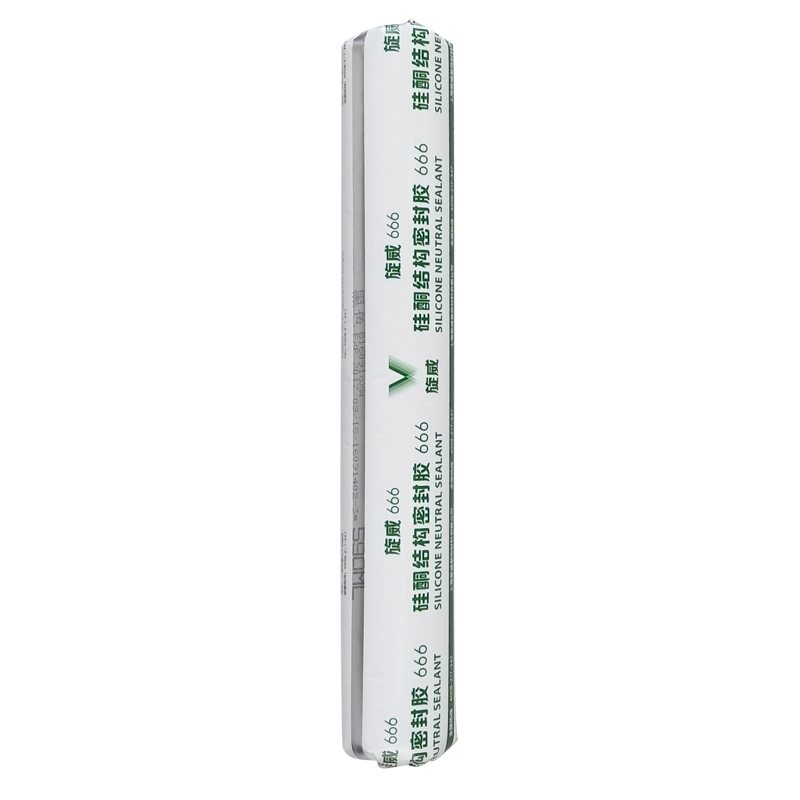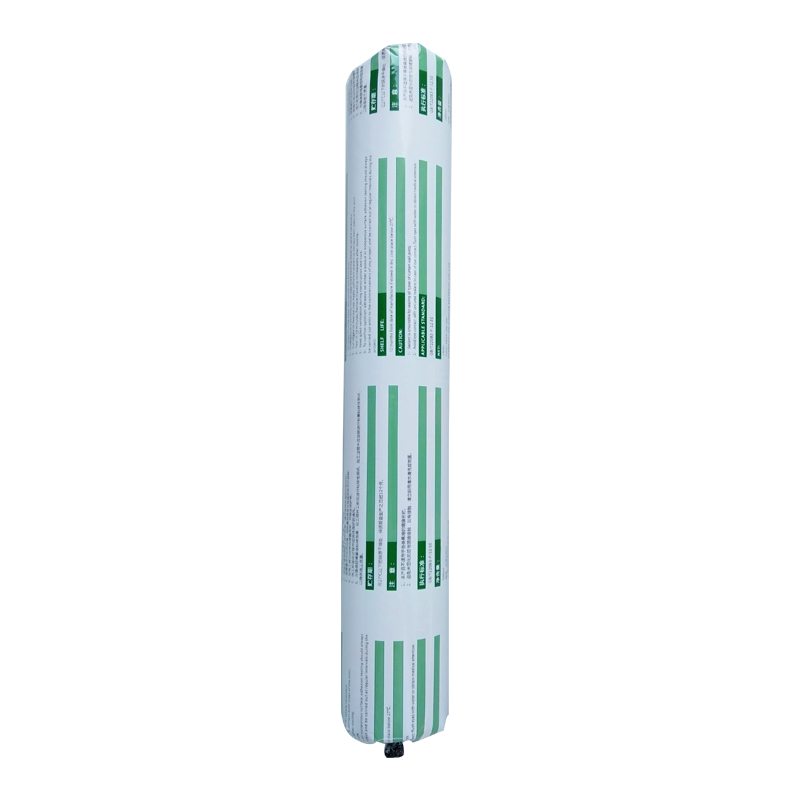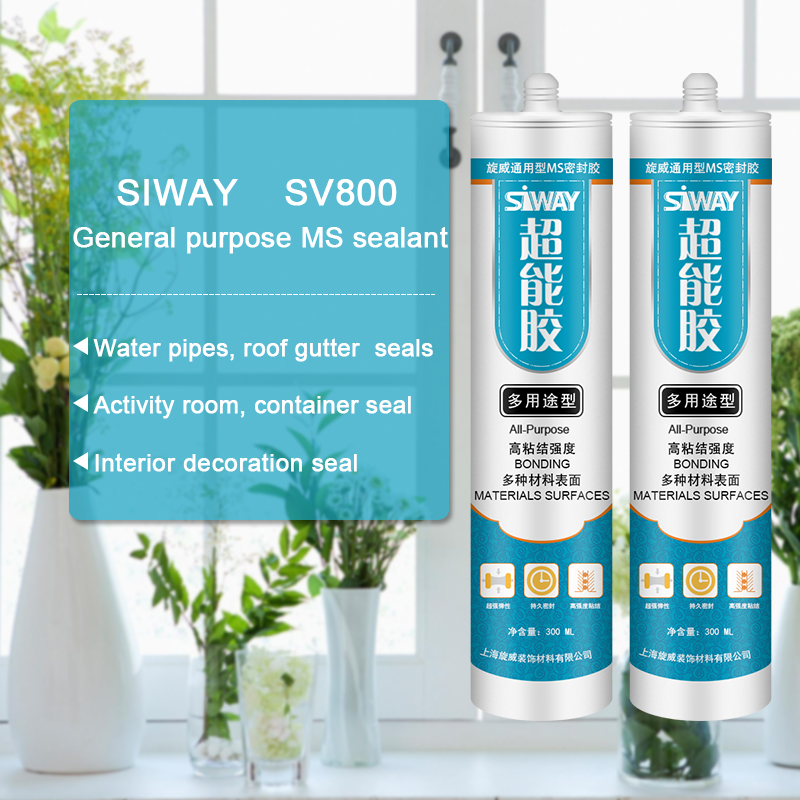Big Discount SV-666 General Use Neutral Sealant Supply to Tanzania
Short Description:
Description SV-666 neutral silicone sealant is a neutral curing glue single component, the modulus of the. It is specially designed for windows and doors caulking sealing general plastic doors and windows. It has good adhesion to glass and aluminum alloy, and has no corrosion. Where to use It is fit for multiple purpose sealing and bonding applications to form a silicone rubber adhering to adjacent substrates e.g. glass, ceramic, tile, wood and metal. Key Features 1. 100% silicone 2. Eas...
Persisting in "High quality, Prompt Delivery, Competitive Price", we have established long-term cooperation with clients from both overseas and domestically and get new and old clients' high comments for Big Discount SV-666 General Use Neutral Sealant Supply to Tanzania, "Passion, Honesty, Sound service, Keen cooperation and Development" are our goals. We are here expecting friends all over the world!
Description
SV-666 neutral silicone sealant is a neutral curing glue single component, the modulus of the. It is specially designed for windows and doors caulking sealing general plastic doors and windows. It has good adhesion to glass and aluminum alloy, and has no corrosion.
Where to use
It is fit for multiple purpose sealing and bonding applications to form a silicone rubber adhering to adjacent substrates e.g. glass, ceramic, tile, wood and metal.
Key Features
1. 100% silicone
2. Easy to use
3. Waterproofing and weatherproofing
4. Primerless adhesion to most building materials
5. 12.5% movement capability
Technical data sheet
| Test standard | Test project | Unit | value |
| Before curing——25℃,50%R.H. | |||
| GB13477 | Flow, sagging or vertical flow | mm | 0 |
| GB13477 | surface drying time(25℃,50%R.H.) | min | 30 |
|
GB13477 |
Operating time | min | 20 |
| Curing time(25℃,50%R.H.) | Day | 7-14 | |
| Sealant curing speed and operating time will have different with different temperatures and temperature, high temperature and high humidity can make sealant curing speed faster, rather low temperature and low humidity are slower.21 days after curing——25℃,50%R.H. | |||
| GB13477 | Durometer Hardness | Shore A | 28 |
| GB13477 | The ultimate tensile strength | Mpa | 0.7 |
| Temperature stability | ℃ | -50~+150 | |
| GB13477 | Movement capability | % | 12.5 |
Certification
JC/T881-2001 12.5E;GB/T14683-2003 12.5E
Color
Black,White,Gray
Package
300ml in cartridge * 24 per box, 590ml in sausage *20 per box
Shelf life
12 months
Note
If you want the TDS or MSDS or other details, please contact with our sales person.
ANO Loodgieter service en onderhoudsbedrijf laat u met een kort filmpje zien hoe je het beste kan kitten.
www.loodgieterdenhaagst.com
Car audio/video (car AV), mobile audio, 12-volt and other terms are used to describe the sound or video system fitted in an automobile. Such devices aren’t necessarily limited to automobiles, and can be used, marketed, or manufactured for marine, aviation, and mass transit (vehicle audio/video). This article focuses on cars as the most common application.
At first, speakers from the home audio and professional markets were simply installed into vehicles. However, they were not well suited to the extremes of temperature and vibration which are a normal part of the environment of an automobile. Different manufacturing techniques, and different component materials were used in construction to adapt to these conditions.
Car audio competitions started in the early 1980s. The first known occurred in 1981 in Bakersfield, CA and evolved into an annual event, The Summertime Sound Off, which at its height drew upwards of 300 contestants and continued into the 1990s. Like the Summertime Sound Off, some competitions during the 1980s were judged based on sound and installation quality, particularly those hosted in California. But most were simply held to find the loudest and/or most outrageous installations. Perhaps the most well known vehicle of this time was the Wayne Harris modified 1960 Cadillac Hearse; featuring three 24-inch subwoofers as well as eight 12-inch subwoofers. During the late 80s, several interests in the car stereo industry promoted the formation of sanctioning organizations to provide common rules and to move the focus to sound quality. The most important of these were CAN (formed by Alpine) and NACA (supported by shop owners and amp manufacturers). Both organizations sanctioned countrywide regional events and hosted National Championship events in the late 1980′s. They merged to form IASCA in 1990. Despite the move to “quality” based judging, volume was still a significant portion of most early 1990′s competitions. Since then, he two styles — SPL vs. sound quality — have become almost mutually exclusive. The loudness competitions have become known as dB drag racing. Currently, MEASQ conducts Sound Quality Competitions nationally in Australia. This back to basics competition format was developed by Marc Rushton, the founder of one of the largest enthusiast organisations known as Mobile Electronics Australia.



